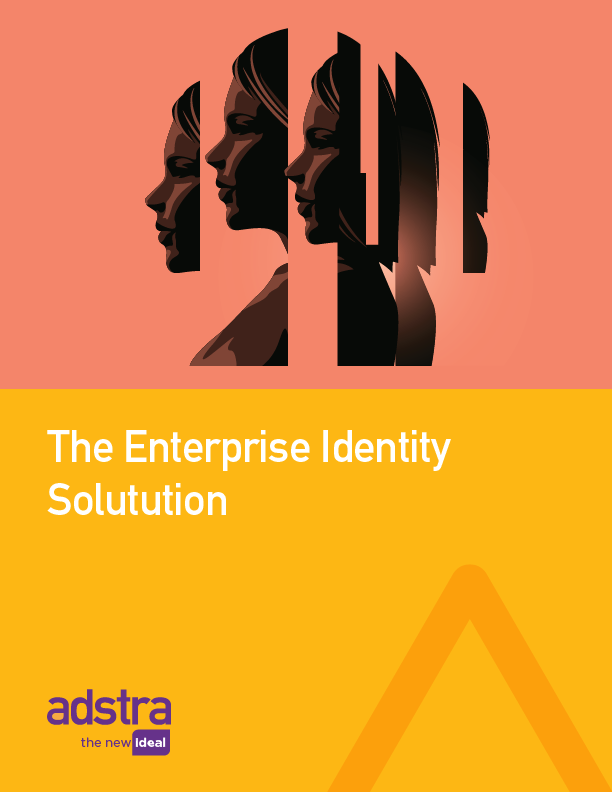“The things that make me different are the things that make me.” – Winnie the Pooh
This Month’s Update
One of the topics that has been baked into the discussion on privacy and ethics of data-driven advertising is the use of “The Algorithm” – most notably how tech giants like Google and Facebook have used their Algorithms to better their profits at the expense of their customers.
Wikipedia defines an Algorithm as “a step-by–step procedure for calculations.”What is important to understand here is that there is nothing inherently bad about using algorithms to drive your business actions. It is, rather, the intentional biases that can be built into and hidden within algorithms, and the unintentional consequences of allowing algorithms to dictate processes (ie. news discovery) that may require more human intervention. These biases have often existed, both intentional and unintentional in any data analysis, calculation or sophisticated algorithm and it is the job of marketers today to spend more time interrogating the data and algorithms to make sure they reflect the best decisions going forward. The data we have at our disposal is vast, complex, and rapidly changing, and can often be shaped to reflect the actions we want, not just what is right.
As a professional in the Data and Analytics space, I long ago learned the lesson of letting the data tell the story, while also making sure that the story reflects the whole picture. This lesson was first brought home to me when I was reading the book “Innumeracy”, by John Allen Paulos who talks to the challenges of mathematical illiteracy. The example I always recall is – and I’m paraphrasing here – say I tell you a test is right 99 out of 100 times. Now what if I tell you that the test is wrong 2 out of 3 times… when identifying the one person. How can both of these statements be true? Well, if the true answer is that only 3 out of 1,000 people are your audience, and the test identifies 10 people… won’t both be true? Paulos was pointing out why it was important to understand the perspective of any information being shared, and how the same data can lead to radically different interpretations depending on how it is presented.
Later in my career, I recall another great example of the standard data biases leading me astray. One of the largest data companies came to me, saying they could save me over $1MM in marketing expense because I was sending mail to people on my file who they believe to be deceased. In looking at the response rate of these “deceased” people, I found out that this segment was twice as profitable as the “living” people. People had done such a good job suppressing dead people, the people left in the homes of these “deceased” people were getting far fewer offers, and thus my offers had a much better opportunity to catch their attention.
As we think about “Algorithms” they are all created with the biases of the experiences and objectives of the people creating them. The bias that homes with “deceased” people don’t respond could easily be programmed. Algorithms will also pick up the biases of history such as people who go to Ivy League colleges or buy nice glasses have a specific profile, missing of course that some communities have been historically denied the opportunity to go to an Ivy school or get nice glasses. The Algorithms that have driven the current dialog are those being used to present display ads to website visitors. Knowing as we do now that Google makes up to 40% on ads in their network, they have used their algorithms to bias the ads presented to those that they make more money on.
Algorithms that “learn” as in many AI-driven applications seek to adjust these biases out in a more rapid form. Some algorithms are accelerating change by conscientiously focusing on creating equity in design. McDonald’s learned long ago to make hamburgers available to everyone equally by adjusting the algorithm to determine the price of the hamburger to match the ability for any community to pay for it. Clever in that their formula maximized return while making their burgers accessible to all equally.
The challenge of getting the Algorithm right is a constant. Netflix paid $1MM in 2009 to the team that could design the best “collaborative filtering algorithm” to predict what movie you might want to watch next. In many ways, they launched the most recent era of algorithm design, and the associated privacy discussion as future challenges were cancelled by Netflix for fear that the data sets themselves held too much personal information specified in the Video Privacy Protection Act.
But for all the fear of Algorithms, there is more good to be found in their use than bad. As noted in Alex Miller’s Harvard Business Review 2018 article “Want Less-Biased Decisions? Use Algorithms”, research shows that algorithms have had a positive impact on society in many ways, from expanding access to mortgages and jobs to previously underserved or underrepresented groups to making better bail decisions, reducing jail rates 41% with no increase in crime rate and reducing the male bias in appointing corporate directors.
At Adstra, we believe in the power of data to be used for good. But to do so, it is about understanding and connecting the data correctly so you can make the best decision possible. As we have said before, it is about being mindful of objectives and outcomes in your design.
If you have the time and want to think more about mindful design, check out Charlie Swift’s article in AdWeek, “Short term identity solution fixes could have long term risks”.
Privacy Highlights
Apple’s advertising business has more than tripled its market share in the six months after it introduced privacy changes to iPhones that required users to opt-in to personalized advertising by other firms, the Financial Times reported.
In an op-ed for Roll Call, the president of the Internet Accountability Project called for the U.S. to enact a federal data privacy law to catch up with other countries.
Representatives Frank Pallone Jr., Mike Doyle, Jan Schakowsky and Anna Eshoo introduced the Justice Against Malicious Algorithms Act, which would strip companies of Section 230 protections for certain content that has been recommended to users based on personalized algorithms and “materially contributes to physical or severe emotional injury.”
An executive with GumGum encouraged the UK to not stray too far from the GDPR in its reform of privacy regulations.
A group of cybersecurity experts criticized Apple’s plan to detect child abuse images on iPhones as “mass surveillance.” In a report, they argue that client-side scanning (CSS) “neither guarantees efficacious crime prevention nor prevents surveillance. Indeed, the effect is the opposite. CSS by its nature creates serious security and privacy risks for all society while the assistance it can provide for law enforcement is at best problematic. There are multiple ways in which client-side scanning can fail, can be evaded, and can be abused.”
The Senate Commerce Committee will hold a hearing, “Protecting Consumer Privacy,” on September 29 at 10 a.m. The hearing will examine how to better safeguard consumer privacy rights, including by equipping the Federal Trade Commission with the resources it needs to protect consumer privacy through the creation of a privacy bureau and the need for a comprehensive federal privacy law. “We want to talk about what a privacy and data security bureau, which is what we think we would be standing up with this money, what would that do to help us in this,” Senator Maria Cantwell said of the hearing, adding that the panel might “at some point” hear from tech companies. Asked about the lack of action to date on a data privacy bill, Cantwell replied, “I don’t know that they’ve been at an impasse so much as we’ve been so busy with other things.”
The Senate Commerce Committee’s Subcommittee on Consumer Protection, Product Safety, and Data Security will convene a hearing titled “Protecting Kids Online: Facebook, Instagram, and Mental Health Harms” at 10:30 a.m. on Thursday, September 30.
In a blog post, ANA’s Dan Jaffe discussed the proposal in $3.5 trillion spending package to create and fund a new privacy bureau at the FTC. “This initiative has been taken without any specific hearings on this proposal or any effort to identify with any specificity how this extraordinary infusion of funding and other resources will be utilized. The proposal also completely fails to do anything to affect the growing number of inconsistent privacy laws in the states that increasingly threaten to impose major costs, disruption, and confusion on the Internet marketplace,” he wrote. “ANA believes the detailed draft bill put forward by Privacy for America (P4A) is an excellent foundation for a new FTC Bureau of Privacy and Data Security. It clearly delineates specific per se privacy and data violations. Spelling out these standards very clearly is essential to make consumers aware of their protections and rights and puts businesses on notice about the guidelines and guardrails controlling their privacy-related actions.”
Twenty-seven consumer and privacy-focused organizations signed a letter to Congressional leadership encouraging enactment of language in the spending package to provide $1 billion to the FTC and create a new data privacy bureau.
A group of 9 Senate Democrats sent a letter to FTC Chair Lina Khan to encourage the Commission to begin a rulemaking process “to protect consumer privacy, promote civil rights, and set clear safeguards on the collection and use of personal data in the digital economy. “An FTC rulemaking initiative would contribute to congressional efforts to develop federal privacy legislation through the research, public comment record, and dialogue required under the Commission’s rulemaking procedure under the Mag-Moss process,” the Senators wrote. Stating that “consumer privacy has become a consumer crisis,” the authors said “the rulemaking should consider strong protections for the data of members of marginalized communities, prohibitions on certain practices (such as the exploitative targeting of children and teens), opt-in consent rules on use of personal data, and global opt-out standards” such as the Global Privacy Control recognized in California. MediaPost, The Hill, and The Verge reported on the letter.
The Senate Judiciary Committee’s Subcommittee on Competition Policy, Antitrust, and Consumers Rights held a hearing entitled “Big Data, Big Questions: Implications for Competition and Consumers” on Tuesday September 21. “Consumer data and technology are critical to the national and international economy. We support the adoption of a well-balanced federal privacy law and competition laws and policies that provide critical protections for individuals and their data, and enable the responsible flow of consumer data among all accountable companies, in order to preserve and enhance the connected marketplace,” IPG Kinesso’s Sheila Colclasure testified. Facebook, Google, and Public Knowledge also participated in the hearing. Senator Blumenthal expressed optimism that he and Senator Jerry Moran will be able to move forward with a bipartisan privacy bill, according to MediaPost. ““We have come very close, and I am very hopeful that we’ll continue to make progress, because this issue of privacy is one of the central ones of our time,” Blumenthal said.
In a guest column for VentureBeat, Acxiom’s Chad Engelgau estimated that state privacy laws could create $1 trillion in compliance costs for businesses and called for a federal data privacy law to solve the problem.
The U.S. Chamber of Commerce ran a full-page ad in The Washington Post to call for a new agreement on data flows between the U.S. and EU. The ad was signed by the 4A’s, ANA, IAB and other business organizations.
The Washington Post debuted a new “Help Desk” with an article with tips on how to request a company delete your data, a guide to important privacy settings to reset with several tech companies, and an investigation of fingerprinting on Apple apps, among other articles.
Digiday reported on the FTC’s application of the Health Breach Notification Rule to connected health apps, fitness trackers, and other apps focused on individual health.
We encourage you to also visit our content blog where you can get the latest news and thoughts on industry issues. While you are there, please also check out our website to gain a clearer understanding of Identity, Data, and all the services we have to offer.
Should you look for more help on these topics, please reach out and we would be happy to help. Email us at connect@adstradata.com
Articles of Interest
Our insights are again only a small fraction of what is being shared out there. Here are some other interesting articles and opinions we thought to share to both inform and inspire discussion.
Forbes magazine contributor Paul Talbot sits down with Merkle/ CXM president Michael Komasinski to talk about the value of Data and how the uses of data will evolve over the next few years given the changes being forced upon the industry
How Data Will Shape The Future of Marketing
Allison Schiff at AdExchanger does a deep dive on the government’s antitrust lawsuit against Google now that more and more of the Texas led suit files are being made available in an unredacted form to the public. By signing deals with other Ad giants like Facebook, and slowing load times of Ads not in their network, Google continues to ensure its 20-40% cut of ad spending.
Inside the Unredacted Lawsuit against Google’s Ad Tech Business
While many of us are still limiting our business travel, Advertising Week still went on last week and there were a number of interesting takeaways. Kayleigh Barber’s article highlights some of the lessons learned as the sessions closed. The theme of the day, injecting authenticity and personality into brand campaigns. Know your audience and don’t overgroup communities just because they are different. Be true to the needs of each audience in your marketing.
While digital may be new to some, it is not to many. Many marketers now find themselves stuck in digital strategies that are no longer effective and progressive in today’s marketing. It’s time to reignite testing new techniques and approaches.
Marketers held back by traditional digital experience strategies
Interesting post by Stephen Foster, former editor of Marketing Week. It does seem that “Funnels” and “Ladders” do explain many of the approaches we are seeing today. It’s about managing the balance of brand building and performance-based ads… where do each fit in the overall strategy of your marketing.
Are ladders and funnels the keys to today’s advertising?
Positivity Press
We can all use a little positivity and fun in life. Here are some of the recent items we wanted to share with everyone:
We have shared some of this before with our readers, but we continue to believe in the positivity of spirit. Having spent time with Bryan Welch at Mindful, he and his organization do a great job helping us refocus and lead more uplifting careers and lives. We encourage everyone to take a few moments to be a bit more mindful.
On the idea of Mindfulness, while not all the social media giants have taken heart yet, it is nice to see that some are. Snapchat is introducing its own set of “family engagement” tools with the goal of increasing privacy and appropriate messaging.
Snapchat partners with Parents
So early on in the pandemic, John Krasinski spun up his web series… “Some Good News”. And while it lives on only in the original 8 episodes (always fun to go back and view) the message he built lives on in many forms. A favorite of our is always the Good News Network, which we encourage folks to make part of their day.
With Covid rates down, vaccines for kids on the way, and Fall finally here, time to get out of the house and have a bit of fun with the kids. Today’s parent has some great ideas for everyone to enjoy the Fall season.
As we have said before, we continue to strive to provide useful, fun, and actionable info that can help us all in some way. Feel free to share feedback and ideas and we can share them with this community. Stay happy and healthy.
If you think others may be interested in getting a copy of this newsletter, please have them email us at connect@adstradata.com and we will add them to our list. You can also find copies of this and previous newsletters at Adstra’s website: adstradata.com
If you like what Adstra has to share or want to learn more about what we do, please visit our website at Adstradata.com or follow us on LinkedIn @Adstra, Twitter @Adstradata or Facebook @Adstradata. We welcome you to the new ideal in data.






